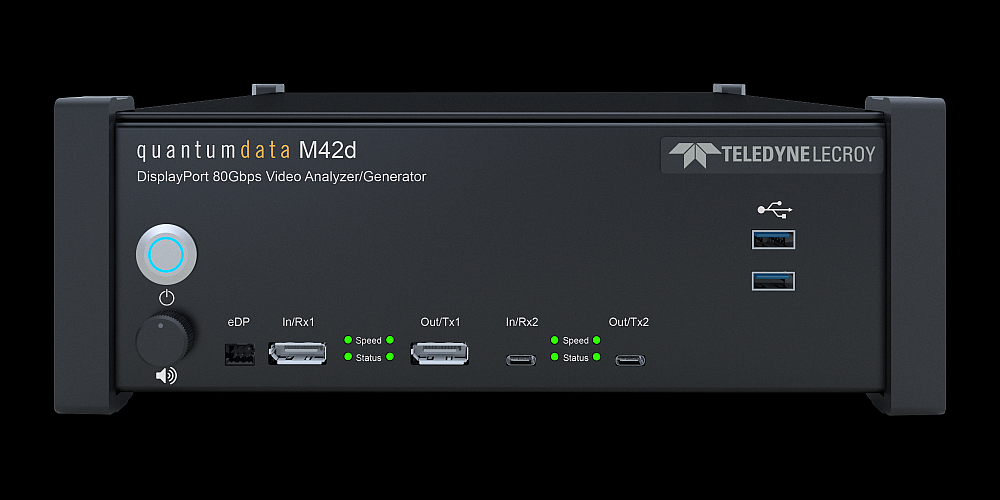- Teledyne LeCroy, a provider of protocol test solutions, has announced the availability of the qdPrime test suite for the quantumdata M42 series generation and analysis system for DisplayPort 2.1 digital interface testing.
- This new software option aims to simplify testing, ensure performance and improve interoperability of DisplayPort source and receiver devices.
- DisplayPort is a digital display interface developed by the Video Electronics Standards Association (VESA).
“The interoperability testing requirements for DisplayPort 2.1 have increased dramatically not only because of higher speeds, but also because of a range of advanced features, including improved resolutions, dynamic refresh rates, compression modes and the integration of Alt Mode on USB Type-C,” said Bill Lempesis, executive director of VESA, which develops and administers the DisplayPort standard and compliance programme.
The quantumdata M42de test platform can be used to verify compliance with the DisplayPort specification for products on the market that incorporate this digital interface. With the qdPrime test suite, full test automation is now available for each verification team. This streamlines performance testing and improves the potential for interoperability between source and receiver.
The speed of test execution and the provision of detailed test logs are designed to significantly save resources, time and effort spent on testing.
Key features of the qdPrime test suite :
– The qdPrime test suite features a library of test cases for performance and interoperability testing of a range of source and receiver devices.
– The intuitive menu-based interface simplifies the selection of test parameters, allowing users to dynamically set up and run automated test plans.
– Using targeted parameters, the qdPrime test suite systematically checks all combinations of channel width, link rate, timing, colour space and bit depth to ensure the most comprehensive test coverage possible.
– Each test instantiation is logged with a pass/fail result, providing a real-time snapshot of the interoperability of the device under test.






